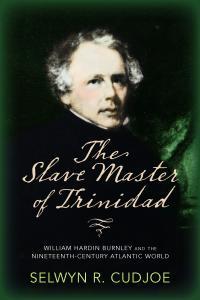Pan and the coat of arms: the imaginary
By Dr Selwyn R. Cudjoe
September 11, 2024
PART I
I am always amazed at the presumptions that we, African people, make about the cultures of others and why we feel that they should adopt them as their own.
The Leader of our Grief says that pan, our national instrument, should be placed on our coat of arms because it’s T&T’s cultural gift to the world. Without consulting anyone, he goes to a PNM convention and declares that by Republic Day (September 24) the measure would be brought to the Legislative Council and it would be a done deal.
A national coat of arms is a symbolic entity that is supposed to reflect the collective sentiments or ethos of a nation. One definition of a symbol says that it "allows people to go beyond what is known or seen by creating linkages between otherwise very different concepts and experiences".
I do not know how Indo-Trinbagonians feel about the pan, but I doubt they hold it in the same esteem and reverence as Afro-Trinbagonians do.
Trinidad and Tobago is the fusion of many cultures, the two main streams being the African and Indian—products of two ancient civilisations that have shaped the intellectual and cultural direction of the world. One only has to read William Dalrymple, The Golden Road: How Ancient India Transformed the World, and Josephine Quinn, How the World Made the West to understand how Indic and African civilisations, respectively, have achieved this. For example, Dalrymple sees VS Naipaul as a product of the Indic civilisation.
Having brought their civilisations to the island, each group possesses its own conception of itself and how it sees others. Scholars call that mental faculty an Imaginary, a form of individual and collective memory. In other words, each group possesses a different picture of the world even though we live in the same space.
In Africanism: Blacks in the Medieval Arab Imaginary, Nader Kadhem, a Bahraini scholar, says "no culture is devoid of representation of itself or the Other". He argues: "Representation is what gives the group a certain image of itself and the Other, and it is what creates for this group an equivalent that Paul Ricoeur [a French philosopher] calls the group’s ‘narrative identity’."
Over time, the Arab imaginary saw black people in a negative light. Kadhem reported: "This Black Other is characterised by bestiality, brutality, excessive sexuality, corruption of morals, deformation of physical appearance, derogatory representations, and distorted and prejudiced stereotypes, which have been embedded in the Arab imaginary and reinforced by various discursive and non-discursive representation practices."
Even Afro-Trinbagonians possess negative stereotypes of Indo-Trinbagonians. In 1892, Frederick Alexander Durham, a Trinidadian who called himself "An African", described Indo-Trinbagonians in a horrible manner in The Lone-Star of Liberia: Being the Outcome of Reflections on Our Own People. James Anthony Froude had called the Indians a proud people who will not intermarry with the Africans.
Durham responded: "When the C... see the propriety of dressing in a manner which would make the casual observer believe that they are a civilised people, if only in an outward sense, and when they cease to go abroad in a state of semi-nudity; when the C... give up boiling and eating their repulsive food or diet; when the C... put a stop to oiling their bodies, an act which gives their shiny bodies the appearance of gliding snakes, especially in the dry season; when they cease bathing their heads with oleaginous liquid, the smell of which is the reverse of odoriferous; and, lastly, when they see the propriety of changing their Hindu or Mohammedan faith, with the superstitious rites accompanying it, and embrace the truths of Christianity—when they have undergone a complete transformation, then, and only then, shall we progressive Africans join in wedlock with them (the Asiatic Indians), not before."
Indo-Trinbagonians also possess horrible images of Afro-Trinbagonians in their minds. In the 1950s there was a terrible accident in Tacarigua. Some of the villagers rushed to assist those in danger. When they asked an Indian man what had happened, he declared: "Two people and a N... dead." In his imaginary, Africans were not people.
It is the height of folly to begin a discussion about changing the national coat of arms on the premise that Indians should be forced to believe what Africans believe or vice versa. We cannot begin to talk about the imposition of a symbolic entity that represents our country without paying attention to how Indo-Trinbagonians and other entities perceive such an action, and it cannot be done in one or two months.
In a matter of such importance, inclusion rather than exclusion should be our guiding light. We must be cognisant of the sensibilities of each group. Getting such a matter wrong has too many implications for national unity.
—Prof Cudjoe's e-mail address is scudjoe@wellesley.edu. He can be reached @ProfessorCudjoe.
Share your views here...

The Slave Master of Trinidad by Dr. Selwyn R. Cudjoe
|

